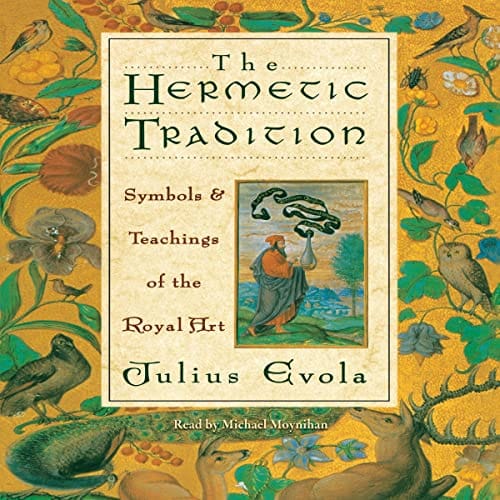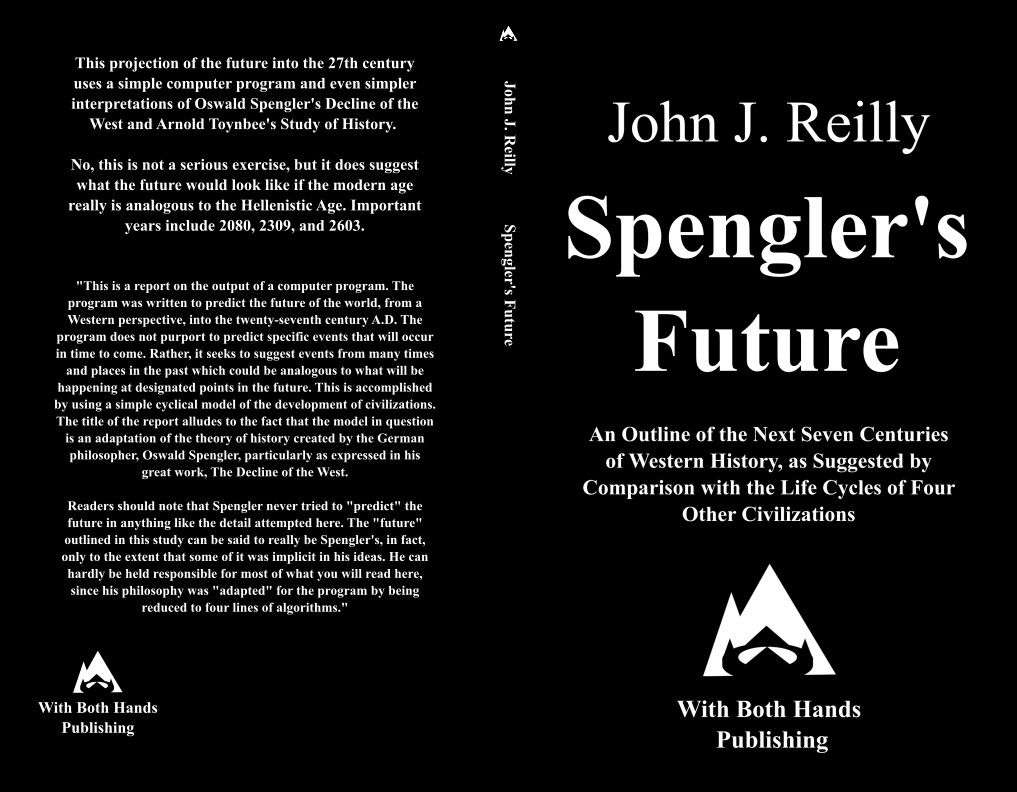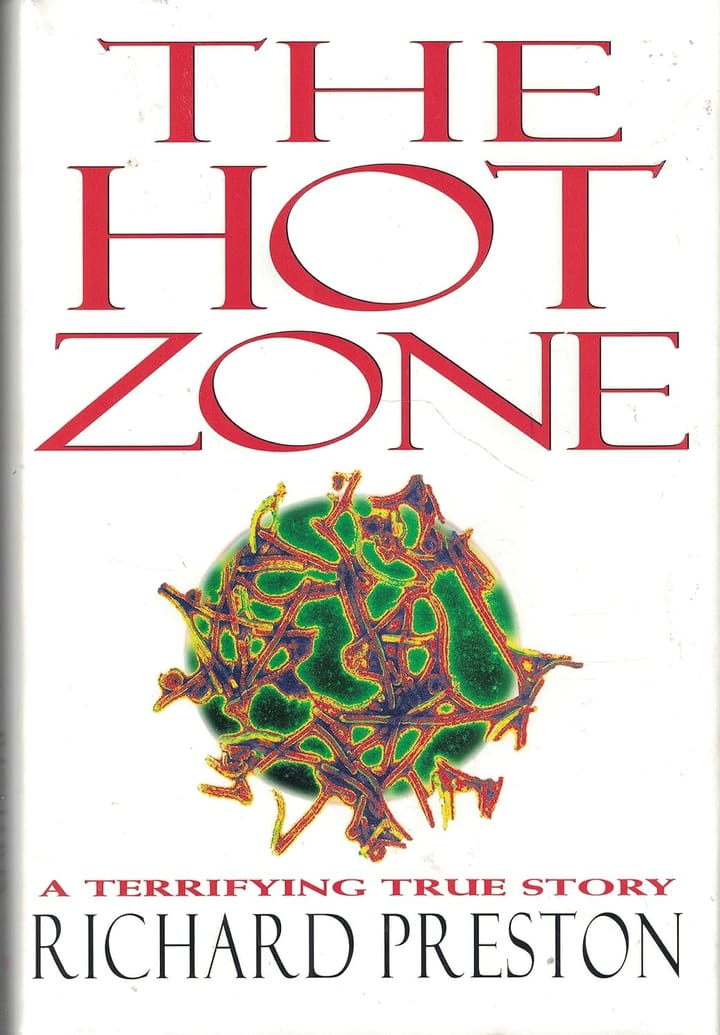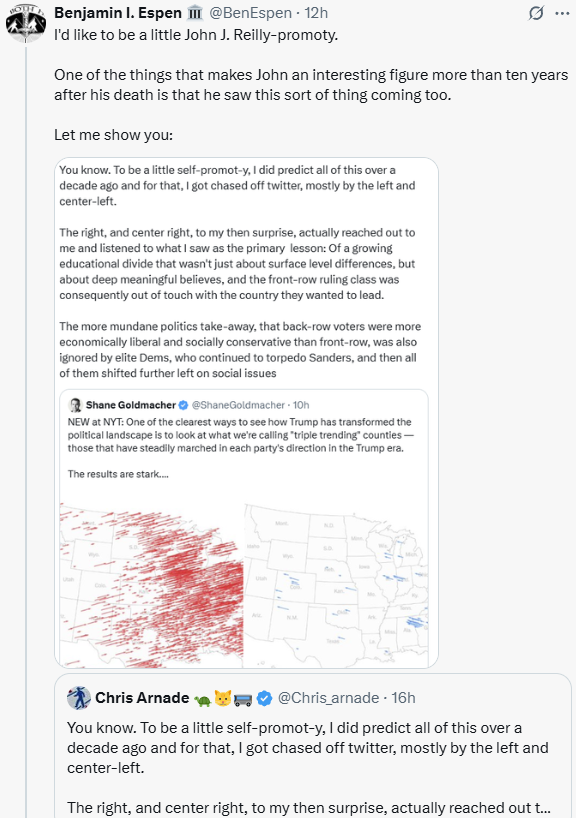The Long View: The Hermetic Tradition

Scott Alexander at SlateStarCodex wonders how someone as bright and generally capable as Isaac Newton could be interested in anything as bizarre as alchemy. I wonder whether he and his readers see alchemy just as defective chemistry, or a spiritual practice and rite of initiation. I suspect the former, but I also think his largely rationalist readership would find the latter equally unappealing. At the least, it is wrong in a more interesting way.
The Hermetic Tradition:
Symbols & Teachings of the Royal Art
By Julius Evola
First Published in Italian, 1931
Revised 1948, 1971
English Translation Copyright:
Inner Traditions International, 1995
220 Pages, US$16.95
ISBN: 0-89281-451-9
There are two modern opinions about alchemy. One is that alchemy was bad, early chemistry. Alchemists tried to turn base metals into gold or to create an elixir of immortality; things that are impossible, or at any rate, that are impossible with chemistry. The other opinion holds that alchemy was a spiritual or psychological exercise, which may or may not have involved the manipulation of actual chemicals. These views are not mutually exclusive; historians of science acknowledge that even alchemists who were clearly engaged in pragmatic chemistry may also have attached some mystical significance to their work, while cultural historians admit that the alchemical mystics could have employed real metals and fires in their rites.
Baron Julius Evola (1898-1974), the noted esoteric fascist and magical idealist, comes down strongly on the “spiritual exercise” side of the question. In fact, he will not even keep company with the psychological interpretation: Evola thinks that C. G. Jung, who popularized the psychological approach, conceded too much to modernity and its denial of the transcendent. For Evola, true alchemy was a technology of initiation, involving mental exercises and physical substances, that allowed the adept to achieve immortality, indeed godhood. The interesting thing about this interpretation is how neatly it fits into the broad outlines of 20th-century philosophy.
There is more than one alchemical tradition. “The Hermetic Tradition” treats simultaneously of the traditions of India, China, and the Islamic world, though it gives most attention to the esoteric tradition of the West. Everywhere in the world, the alchemical enterprise is couched in unhelpful language. The texts, which are quoted copiously in the footnotes to this book, talk about a process that turns material from back to white and then to red, about sulfur and the liberation of mercury, about the purifying fire and a fixative arsenic, and about the Great Marriage and the resurrection of the king. Here is one of the more lucid explanations of the first stage:
“Hermetically speaking, 'separation' means the extraction of the mercury from the body. Once the action of the animal organism on the vital force has been suspended, the other principles are virtually free as well. For this reason it is said that Mercury is the only key 'capable of opening the locked Palace of the King' or as Philalethes also says, 'breaking the barriers of the Gold.' Thanks to the separation Mercury is again liberated, returned to the state of vital, unlimited possibility (it is this that is known as 'conversion in the First Matter'). And now the internal Sulfur finds the way open to every transcendent activity or transformation.”
Obviously, whatever else is going on here, the Mercury in question is not that found in thermometers, and the Sulfur is not that found in matches. When the planets are mentioned, Jupiter and Saturn, for instance, the reference is not quite to the objects in the night sky.
Evola explains the cipher-quality of the hermetic language in two ways.
First, certain aspects of hermetic doctrine are disturbing and even subversive, so the art should not be easily accessible. In Evola's estimation (though not in Rene Guenon's), alchemy is literally a royal art, more powerful and fundamental than the knowledge of priests. The adept has no king, being himself in direct contact with the transcendent that kingship is supposed to mediate. Additionally, alchemists know that immortality is a prize for the few, and not an attribute shared by all human beings.
Second and more important, the alchemical process is explained in concrete terms because abstraction will not do. As Heidegger put it, some things are simply “thrown” into our experience; they cannot be reduced to anything else. Heidegger was thinking chiefly of death, but alchemy expands the list of realities that are prior to thought, that are prior even to physical science. Evola interpreted alchemy as a species of existentialism. The alchemist defines himself, creates his immortal body of light, by struggling successfully against primordial realities. One might almost say that there is no alchemical “doctrine”: there is only practice.
Be that as it may, the alchemical process has the skeleton of the quest stories. The would-be initiate must go on a night-journey, perform a great deed, and then return to transform his place of origin. The initiate, in fact, must literally die, or at least temporarily dissociate his consciousness from his physical body. He must hold his awareness together against the temptation to dissolve into the All, which is the trap of mysticism. He must withstand the universal elemental forces that lie below the threshold of conscious. These are the archons, the souls of the metals and their associated astrological planets, which may appear as demons or as gods.
The spirit of the initiate must be “fixed,” its individuality frozen out of the infinite possibilities of the disincarnate state. This is done by union with the poison that initiated the dissolution. The spirit then returns back to the body, which it transforms into an indestructible “body of light” (though this will not necessarily be apparent to objective observers), in which the primordial elements are balanced. Such a body will have lost the ability to die.
Although “The Hermetic Tradition” has one half dedicated to theory and the other to practice, we are in fact told little about how the wonders of alchemy are effected. Drugs can apparently be used to achieve out of body states. So can breathing techniques. Prayer can enter in, if it is understood as a technique for commanding non-human forces rather than as devotion or supplication. For that matter, the mere shock of death can fix the spirit of a suitably disciplined person, even if he knows nothing of initiation. In general, though, there are two paths.
The “wet” path is that of meditation and of induced out-of-body states. The “dry” path is that of asceticism, which seeks to harden the spirit by cleaning it of impurities. In this context, impurities are not sins. They may also be habits that moralist would call vices, but I gather that some of them might be considered virtues. According to Evola, the initiate, like the strict Buddhist, rids himself of all emotional connections with the material world. In the purified state, he will therefore be able to act, not from desire, but from transcendent necessity.
The dry path apparently also includes the “heroic” methods of initiation, which strike directly at the natural body and turn it immediately into a body of light. Death in battle can do this. So can Kundalini Yoga, a sexual technology about which Evola has written elsewhere. I have never read a discussion of Kundalini Yoga that did not remark that its practitioners have a fair chance of winding up dead or insane. It's probably one of those things that readers should not try at home.
Evola is careful to distinguish between immortality and mere survival. Ordinary human beings may become ghosts or shades in Hades for a time after their death, but their personalities are extinguished. The initiate, in contrast, joins the ranks of Those Who Are. Evola associates them with the undying immortals of the Hesiod's Gold and Silver Ages, and with the Sons of God in Genesis who looked on the daughters of men with favor. They are the Watchers. They have no need of incarnation, though they sometimes appear as living men, and they affect history in ways unfathomable to the mortal world. Yes, he does mention the Rosicrucians favorably.
Evola has some remarks about the powers of the immortals. They can, it seems, project specters of themselves to distant places. At a higher level of practice, they can teleport matter. For that matter, they can indeed turn base metals into gold, if they feel sufficiently strongly about it: Evola cites historical examples. They can read minds, and put thoughts and emotions into the minds of others. They can even put spiritual illumination into the minds of others, which is part of the reason alchemy has remained in the shadows. It seems that sometimes the alchemical process does produce a physical elixir or Philosopher's Stone. However, only an initiate can make it work.
Evola also tells us that initiates can cure bodily afflictions. Evola was himself unable to walk unassisted for the last 29 years of his life, because of injuries he suffered at the end of the Second World War. He revised this book twice since that event, and at one point, he does seem to try to address the charge of “magician, heal thyself.” He notes that the great initiates, or at least those who were not also kings, were often obscure. They were beyond worrying about what people thought of them. For Those Who Are, the events of the human world are of no essential importance, even if an adept presents “the spectacle of a life that perhaps few would envy.”
On many occasions, Evola denounced fatalism. He does so again in this book, in connection with his discussion of the prophetic abilities afforded by alchemical initiation. The immortals are, of course, freed from time; they can see past and future as easily as the present. However, we should not imagine that they simply acquiesce to the flow of history that proceeds from the astrological gods or the fates. Rather, the will of the initiates becomes one with the transcendent. They know the future, because they will it. Since they are immortal, their will never ceases to operate; it is reality itself.
Evola even draws a distinction between the “white” level of alchemical initiation, which Rene Guenon said was the goal of the Work, and the “red” or royal level. Both raise the initiate to immortality, but the white initiate rises merely beyond this creation: this is the highest illumination for the sacerdotal soul. The red initiate, however, goes beyond being itself.
As so often with Evola, one notes that his idea of initiatic prescience turns out on examination to be a fantasticated version of a familiar notion from modern philosophy. We are dealing here with just another version of Hegel's solution to the problem of Freedom and Necessity. Hegel says that these become one at the end of history, when consciousness understands how the world works, and so sees that all the free choices ever make were also necessary choices. Nietzsche's proposal to embrace the Eternal Return, to will the wheel of history, is very much along the same lines. Evola's sole novelty is the projection of the principle into the future.
Evola's reading of the alchemical tradition is not the only possible one. He does provide a fairly straightforward account of the symbols and language common to the art. Although the author is beyond such bourgeois concerns as a standard of evidence, he does make some effort to deal with the objections and general incredulity that alchemy occasions. Still, there are matters on which Evola prefers not to dwell. He is aware that the great tradition of spiritual practice in the West is often little different from the process described by some alchemists. Evola would have us believe that the saints were practicing magic without knowing it. One might more reasonably say that the better alchemists were practicing a very eccentric form of prayer. The worse alchemists, or the worse people who were alchemists, simply corrupted prayer into a singularly futile technology.




Comments ()